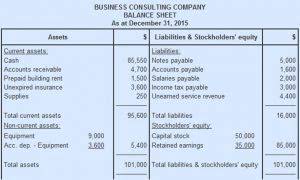
If a company pays all of its retained earnings out as dividends or does not reinvest back into the business, earnings growth might suffer. Also, a company that is not using its retained earnings effectively is more likely to take on additional debt or issue new equity shares to finance growth. On the other hand, though stock dividends do not lead to a cash outflow, the stock payment transfers part of the retained earnings to common stock.
What is the approximate value of your cash savings and other investments?
This article provides a comprehensive overview of what you need to know about retained earnings, but feel free to jump straight to your topic of focus below. Let’s say that the net income of your company for the current period is $15,000. The above definitions for the balance sheet elements clarify that retained earnings are equity. Since this balance is a type of equity, it also acts similar to other equity balances. The ultimate goal as a small business owner is to make sure you accumulate these funds.
Great! Hit “Submit” and an Advisor Will Send You the Guide Shortly.

For an example, let’s look at a hypothetical hair product company that makes $15 million in sales revenue. As a result, additional paid-in capital is the amount of equity available to fund growth. And since expansion typically leads to higher profits and higher net income in the long-term, additional paid-in capital can have a positive impact on retained earnings, albeit an indirect impact. Retained earnings are reported under the shareholder equity section of the balance sheet while the statement of retained earnings outlines the changes in RE during the period.
- If the company is experiencing a net loss on its Income Statement, then the net loss is subtracted from the existing retained earnings.
- Retained earnings are reported on the balance sheet under shareholder equity, which is classified as a long-term asset.
- Retained earnings for a single period can reveal trends in the company’s reinvestment, but they don’t tell you how those funds are used, or what the return on investment is.
- You calculate retained earnings by combining the balance sheet and income statement information.
Our Team Will Connect You With a Vetted, Trusted Professional
If a company consistently operates at a loss, it’s possible, though less common, for retained earnings to have a debit balance. Your accounting software will handle this calculation for you when it generates your company’s balance sheet, statement of retained earnings and other financial statements. Retained earnings enable you to track how much money you have accumulated in an income statement using a formula. On a company’s balance sheet, retained earnings are put under the equity section. Since retained earnings can be used to buy assets, people sometimes wonder if retained earnings are an asset.
- As a result, additional paid-in capital is the amount of equity available to fund growth.
- The schedule uses a corkscrew-type calculation, where the current period opening balance is equal to the prior period closing balance.
- First, you have to figure out the fair market value (FMV) of the shares you’re distributing.
- Though retained earnings are not an asset, they can be used to purchase assets in order to help a company grow its business.
- As you reinvest your business or pay shareholder dividends, your retained earnings dip down.
Formula For Retained Earnings
While you can use retained earnings to buy assets, they aren’t an asset. Retained earnings are actually considered a liability to a company because they are a sum of money set aside to pay stockholders in the event of a sale or buyout of the business. Net Income is the profit your company made during the current period after all expenses have been deducted from revenues. The income statement calculates net income, which is the balance you have after subtracting additional expenses from the gross profit. Retaining earnings by a company increases the company’s shareholder equity, which increases the value of each shareholder’s shareholding.

Assuming your business pays its shareholders dividends (stock or cash), you’ll need to factor those into your calculations. Subtract the amount paid in dividends in the current accounting period from your retained https://x.com/BooksTimeInc earnings balance from that same period. The figure is calculated at the end of each accounting period (monthly/quarterly/annually).
- This information will be listed on the balance sheet under the heading «Retained Earnings.»
- Many firms restate (or adjust) the balance of the retained earnings (RE) account as they record the effects of events that have their origins in earlier reporting periods.
- Equity refers to the total amount of a company’s net assets held in the hands of its owners, founders, partners, and shareholders (residual ownership interest).
- Organizing your expenses into specific budget categories helps you prepare for a smooth tax filing season and make more informed business decisions.
- You can also store receipts, have a choice between cash and accrual accounting, and run reports when you need to.
- The retained earnings of a company are the total profits generated since inception, net of any dividend issuances to shareholders.
Your information is kept secure and not shared unless you specify. This team of experts helps Finance Strategists maintain the highest level of accuracy and professionalism possible. Finance Strategists has an advertising relationship with some of the companies https://www.bookstime.com/ included on this website. We may earn a commission when you click on a link or make a purchase through the links on our site. All of our content is based on objective analysis, and the opinions are our own. The content of this article is meant to be used as general information and help.
Your Bench account’s Overview page offers an at-a-glance summary of your income statement and balance sheet, allowing you to review your profitability and stay on top of your cash flow from month to month. Spend less time figuring out your cash flow and more time optimizing it with Bench. When a company generates net income, it is typically recorded as a credit to the retained earnings account, increasing the balance.
Get in Touch With a Financial Advisor

Rather, it could be because of paying dividends to shareholders, capital expenditures, or a change in liquid assets. It might also be because of different financial modelling, or because a business needs more or less working capital. However, to calculate retained retained earnings asset or liabilities earnings from the balance sheet, you take out dividends, along with net income or loss. As a result, the retention ratio helps investors determine a company’s reinvestment rate.
